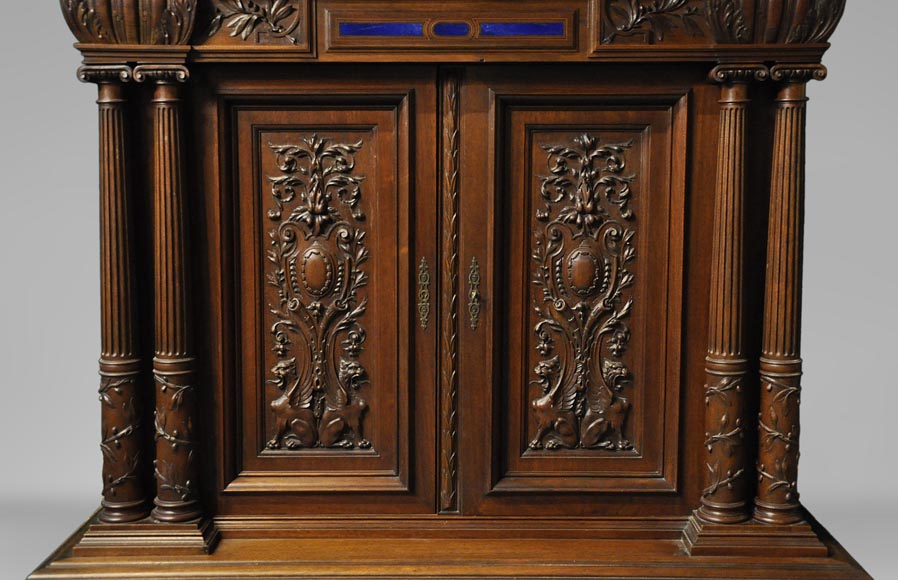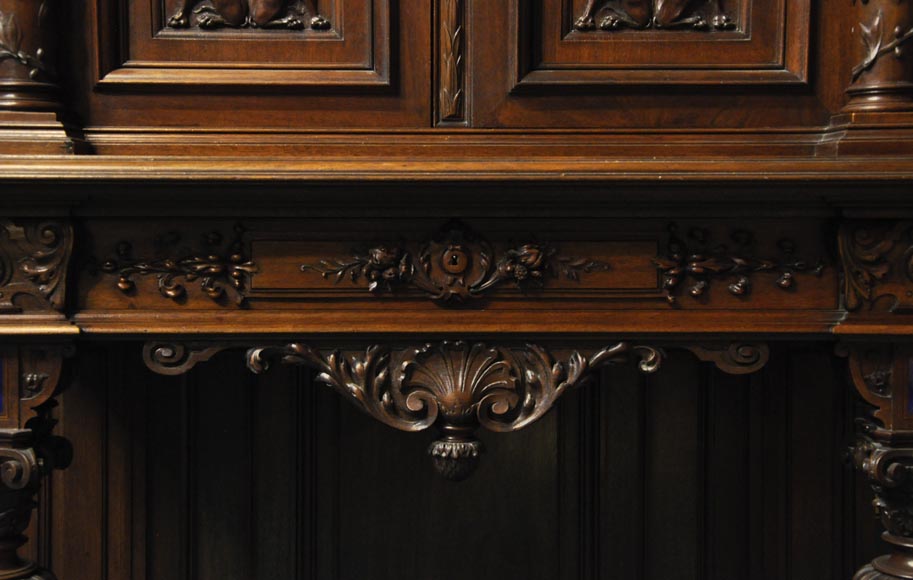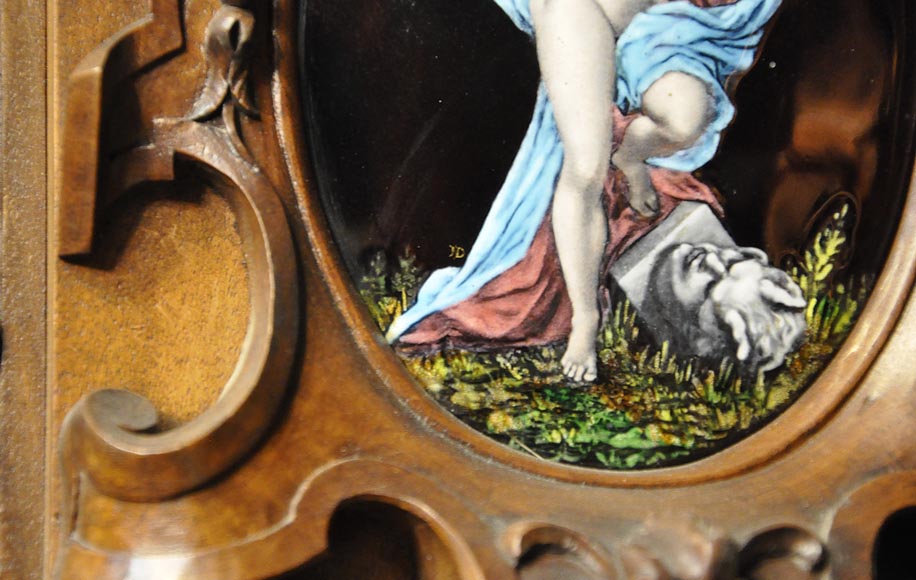Style Neo-Renaissance / Ref.10993
Two-body cabinet, in th Neo-Renaissance style, in carved walnut with enamel and lapis-lazuli inlays
Dimensions
Width 41'' ¾ 106cm
Height 87'' ⅜ 222cm
Depth: 17'' ¾ 45cm
Origin:
France, 19th century
This magnificent Neo-Renaissance style cabinet was made out of carved walnut in the 19th century.
The upper part opens with two doors decorated with grotesque including a cartridge supported by the wings of two addorsed chimeras. The doors, separated by a stick covered with a vertical foliage frieze, are framed by two pairs of ionic columns which bottom of the shaft is not fluted but covered with branches and fruits. They support an architrave which angles and sides are covered with a frieze of ova and acanthus leaves and which center is inlaid with lapis lazuli plates.
The apron separating the two parts of the cabinet is also richly carved with foliages and has a drawer whose lock is inserted into a cartridge from which flowers escape. This apron ensures the transition between the upper part, full and richly decorated, and the lower part, empty, which consists of two architectural columns connected to the apron by a carved wooden element inlaid with lapis lazuli. The bottom is simply paneled while the columns rest on pedestals inlaid with lapis lazuli. The cabinet is supported by four ball feet.
Finally, this magnificent cabinet is crowned with an architectured broken pediment which lateral cornices wrap in volutes and frame a pedestal supporting a vase. It is adorned with an acroterium ornated, in a cartouche, by an enamel plate decorated with a naked woman wrapped in draperies.
This piece of furniture is typical of the Neo-Renaissance style that develops in the 19th century. The cabinet, a furniture type which was created in since the 16th century, has a real success in the first decades of the 17th century. Intended to be leaning against a wall, it is composed of two superimposed bodies: the upper part, with a cornice and opening with two doors, and the lower part, often featuring columns or pilasters and resting on ball feet. These two parts are joined together, as we see here, by an apron including one or more drawers.
In the 19th century, the cabinet lost its original function of campaign furniture: it is often designed in one element only with a base that becomes part of the furniture. Of its original functions, it preserves that of pageantry, reinforced by the use of a Renaissance style ornamental and iconographic vocabulary (antique columns, broken pediments, friezes of ova, grotesques, chimeras etc.). The use of noble materials contributes to the beauty and refinement of these pieces of furniture. Finally, enamel or lapis lazuli inlays renew with the Renaissance taste for precious furniture while bringing some touches of polychrome.
Informations
Price: on request
Recommended for you :
Dimensions:
Width: 67
Height: 203
Depth: 32
Dimensions:
Width: 32
Height: 59
Depth: 22
Dimensions:
Width: 85
Height: 132
Depth: 54
Dimensions:
Width: 72
Height: -1190
Depth: 42
Dimensions:
Width: 98
Height: 204
Depth: 43
Dimensions:
Width: 75
Height: 158
Depth: 47
Dimensions:
Width: 281
Height: 82
Depth: 156
Dimensions:
Width: 85
Height: 150
Depth: 43
Dimensions:
Width: 78
Height: 186
Depth: 47
Dimensions:
Width: 110
Height: 173
Depth: 44
Dimensions:
Width: 114
Height: 130
Depth: 49
Dimensions:
Height: 228
Diameter: 88






















